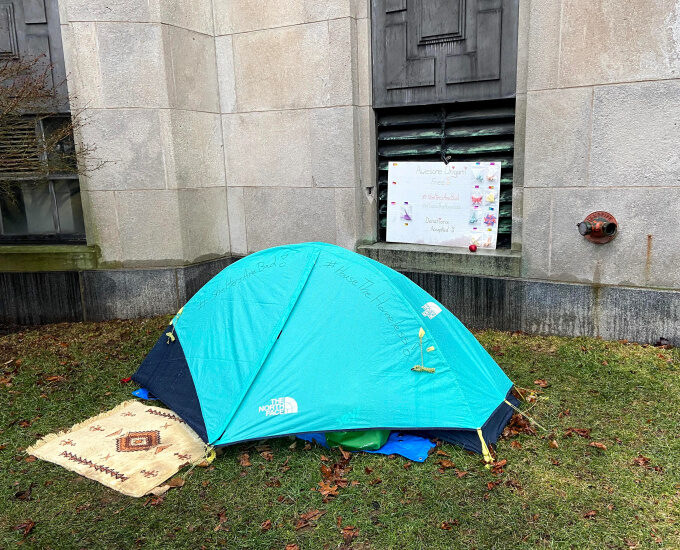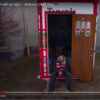
KJIPUKTUK (Halifax) – In September of last year a survey determined that there were some 50 people sleeping rough in urban HRM.
In late March some of the same folks involved in that first count found that even in winter weather there are at least 14 people who for a variety of reasons end up sleeping outside.
They all self-identified as male, some lived in mutual aid crisis shelters, others slept in tents, others didn’t say. Ages ranged from 25 to 51. Seven individuals identified as white, one was of Asian ethnicity, and one person was Indigenous. Two identified as members of the LGBTQ community. On average they have been without their own place for 15 months.
On their wishlist of services they mentioned things like showers, storage for stuff, drug free shelter, less toques more socks, access to work or college courses, laundry, food services that respect allergies, and smaller and safer shelters.
That number of outside sleepers wasn’t really a surprise to Eric Jonsson, program coordinator with Navigator Street Outreach, who together with a few colleagues conducted the count on March 9th, a cold day with snow on the ground.
14 may sound like an improvement over the summer’s count, but things aren’t that simple, says Jonsson.
“The first thing I’ll say is that even one person is one person too many, especially when you think of the weather that we’ve had,” Jonsson says.
“It’s also easier to be outside in the summer. This time we encountered no women, while in the summer we talked to quite a few. You have to wonder if they’re staying in abusive situations because there is no place to go in the winter. Same for people living in crappy rooming houses,” says Jonsson.
For Jonsson the solution is fairly straightforward. Build more public and non-profit housing, because the private market isn’t the answer, he says.
He points at Adsum for Women and Children as an example of how to do that.
“I’m almost positive that Sheri Lecker, the executive director there, has shovel-ready projects ready to go, so that whenever the federal government announces funding for housing, she’s like, Oh, great, let’s do this. That’s what we just need more of,” he says.
“It’s the way to go, because the private market is not working anymore. It may have worked for a while, 10 years ago it used to be a lot easier to find places in Dartmouth and Fairview and Spryfield. But now, the private market is just gone, taking all these options away from anybody who’s low income or needs affordable housing.”
“And when I say affordable, I don’t mean a percentage of the average rent in a neighborhood. I mean affordable like a percentage of your income, like the $595 monthly income assistance that a single person receives to live on,” Jonsson adds.
Only two of the nine people Eric and his colleagues spoke with get any income assistance. One other person is on CERB. The remaining six are without any kind of income.
“We need to point out how many people are outside and don’t have income assistance at all, because they don’t have an address,” says Jonsson.
At times Jonsson can act as a kind of trustee and refer people so that they receive at least the $280 living allowance that people in shelters receive. But when he was gone for a few weeks in February it became apparent he’s the only one who has that arrangement with Community Services. Hopefully, they make it more permanent and more available to other agencies, he says.
Jonsson is frustrated. The tracking, the coordination and prioritization, they’re all things he and his colleagues shouldn’t have to focus on so heavily, he suggests.
“I’ve been working with homeless people for 10 to 11 years now. We just keep doing the same thing, and homelessness does not decline, it keeps going up and up. Part of that are big systemic factors. But part of it really comes down to that there’s no leadership from the province. The province is happy to just manage homelessness, rather than trying to end it,” Jonsson says.
See also: What I learned when my mom wanted to escape a violent relationship
Check out our new community calendar!
With a special thanks to our generous donors who make publication of the Nova Scotia Advocate possible.
Subscribe to the Nova Scotia Advocate weekly digest and never miss an article again. It’s free!




Could you please provide the link to the survey? Thank-you.
It’s not online. I emailed you.